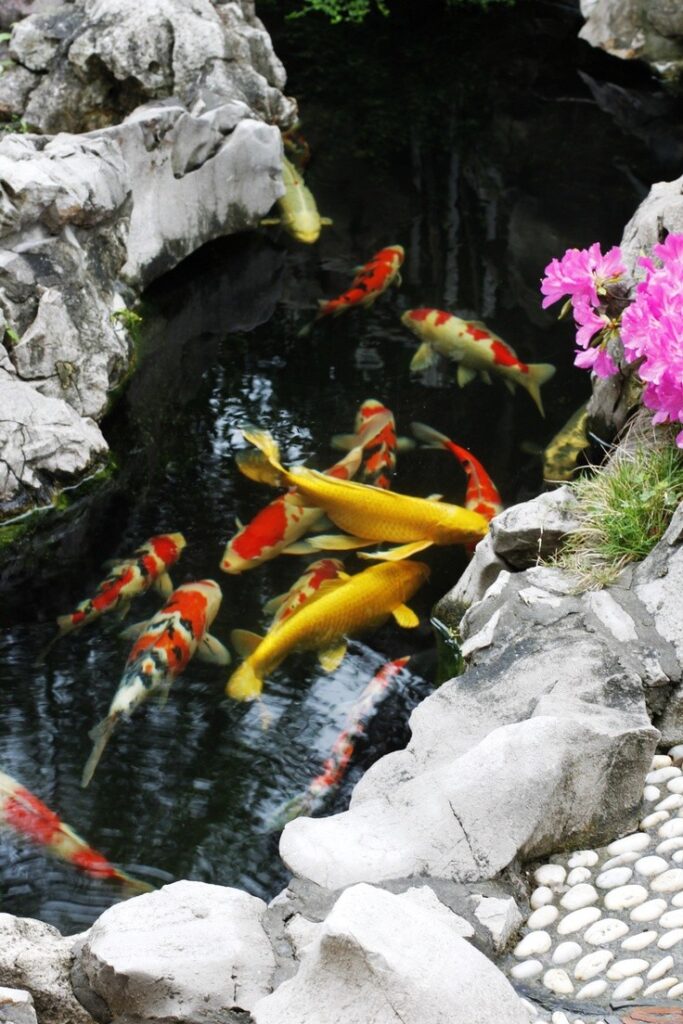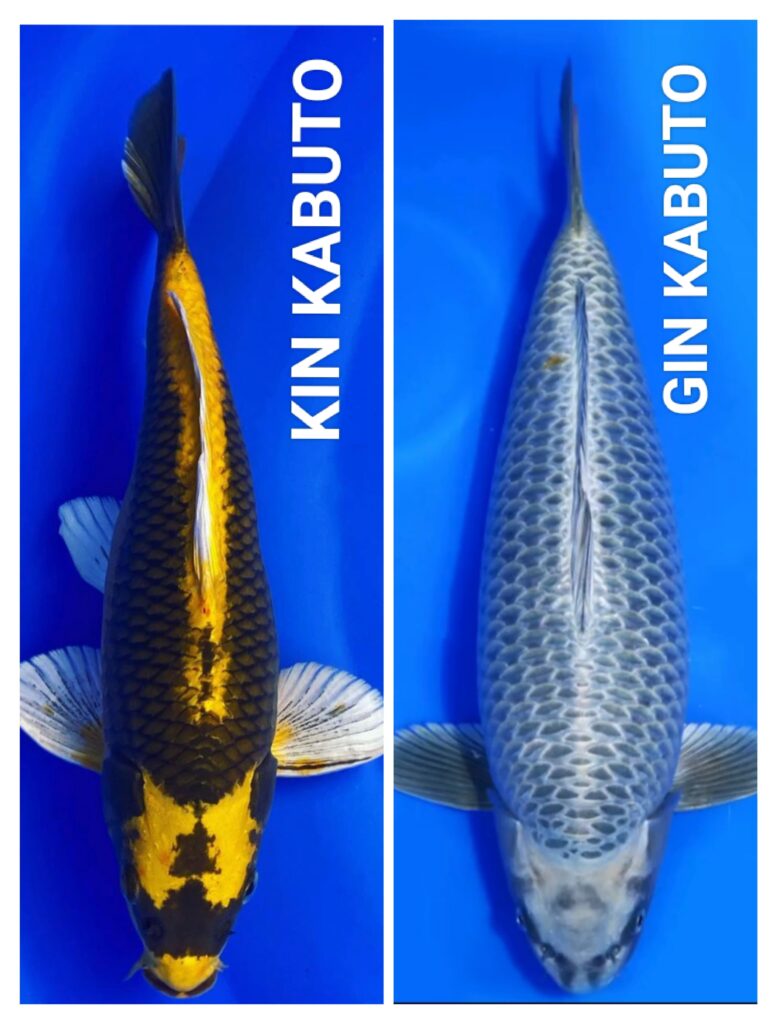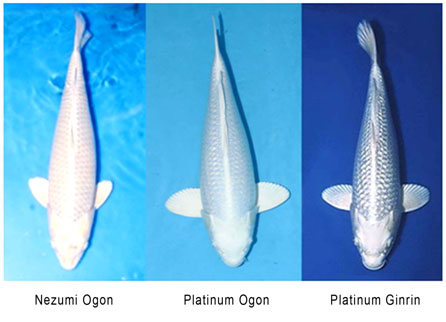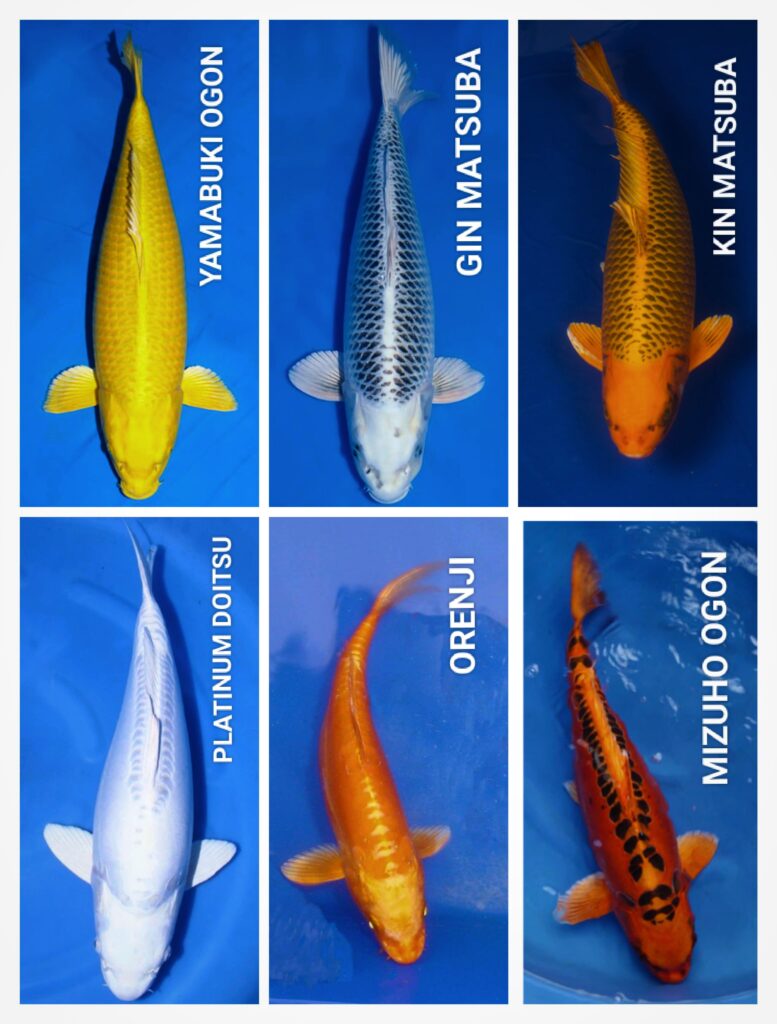
Hikarimono Ogon Koi is a type of koi fish with a golden shiny color, including the Hikarimuji or Hikarimono type which is popular with Ogon. From the name, ‘Hikari’ in Japanese means ‘sparkling’ or like reflecting light and ‘Muji’ which means plain. Then many people call it metallic Koi.
It is said that around 1921, in a river in Takezawa (Yamakoshi Prefecture) Japan, a Koi was found with a golden sheen on its back. These Koi were then intensively cultivated by Sawata Aoki and his son Hideyoshi in 1946. The Koi with the best metallic color were then chosen as parents to obtain better metallic Koi.
At that time, it was not easy to get metallic Koi that were evenly distributed throughout the body. Sawata Aoki and his son diligently bred these Koi and after reaching the 4th generation, they just got ‘Kin Kabuto’. ‘Kin’ means ‘gold’ and ‘Kabuto’ means ‘hat’ or ‘helmet’. So Kin Kabuto is a golden Koi, but the head has a pattern that resembles a hat. Kin Kabuto is known as the origin of the metallic Koi that exist today.
Apart from Kin Kabuto (golden in color), Gin Kabuto (silver in color) and Sakin (colored like gold powder) are also available. The three of them continue to be cultivated by crossing them with female Shiro Fuji Koi, namely pure white Koi, pure white like Mount Fuji covered in snow.
From this cross, a Koi variety was born with a golden color all over its body. Ogon is known as the beginning of various types of Koi which are included in the Hikarimono variety.

Several types of metallic Koi are included in the Ogon variety:
1. Nezumi Ogon (Nezu Ogon)Nezumi means ‘mouse’, so Nezumi Ogon is a metallic Koi that is white and slightly gray like the color of a white mouse. Nezu Ogon is a short name for Nezumi Ogon.
2. Platinum OgonIn 1963, Tadao Yoshioka in the Japanese city of Uozu, obtained a silvery Koi after crossing Ki-goi with Nezu Ogon, which is now popular with Platinum Ogon or Puracina.

3. Yamabuki Ogon’Yamabuki’ is taken from the name of a type of yellow rose found in the mountains of Japan. The Yamabuki Ogon Koi, was first bred by Masaoka in 1957, namely from a cross between Ki-goi and Ogon. The result is Koi with a pure gold color.
4. Kin Matsuba and Gin MatsubaIn 1960, Eizaburo Mano obtained Kin Matsuba by crossing Koi Matsuba with Ogon. Meanwhile, Gin Matsuba is Matsuba with a silvery (Platinum) base color.
5. Doitsu OgonNamely the Ogon Koi which only has scales that form a straight line on the top of its back.

How to Choose Metallic Koi (Ogon)
• The head should be clean/smooth without any spots or color patterns.
• The scales have a golden or silvery sheen. The more even the golden/silver color throughout the body down to the chest or stomach, the better the quality.
• The pectoral fins appear shiny and brilliant.
• The body shape is round and long.
• When the water temperature increases, the color of the Ogon Koi usually becomes slightly darker. If the quality is good, then even if the water temperature increases, the color will remain stable.
• Especially for the Doitsu Ogon type, it has upper scales that form neat straight lines and do not overlap.
©2024 Be Koi Farm – Web by elshobah